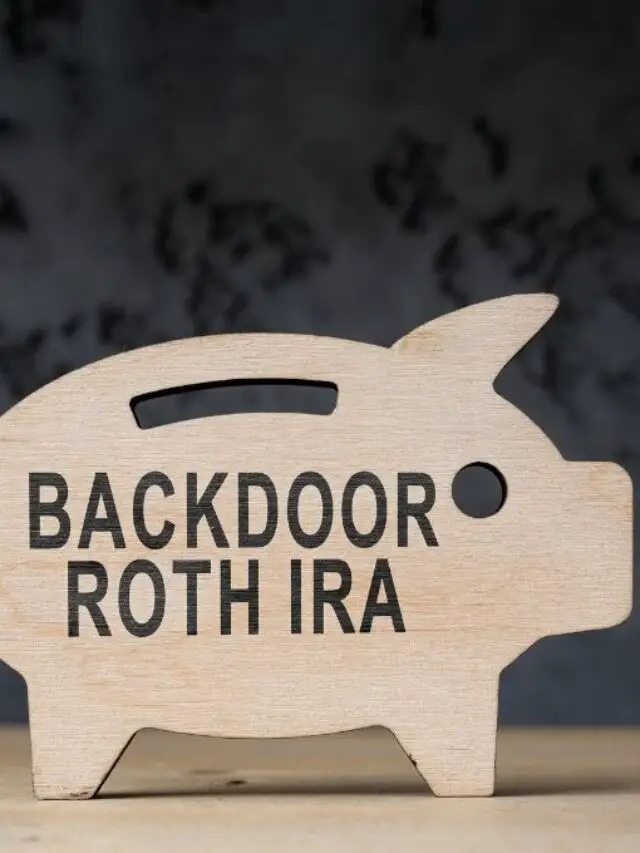Hey there, savvy saver! Ever felt overwhelmed by the mountain of bills, the never-ending receipts, and those sneaky bank statements? Oh boy, I’ve been in those shoes. But then, I discovered this game-changer: the 50/30/20 rule. Think of it as that super chill friend who always knows how to simplify the messy stuff. So, get comfy, and let’s dive into this together.
Table of Contents
So, What’s the 50/30/20 Rule Anyway?
Picture your paycheck as a delicious pie. Here’s how you’d divvy it up:
- 50% on the must-haves: This is the meaty part. It covers the basics: rent, food, bills, and yes, that Netflix binge. It’s the backbone of your financial life.
- 30% on the good vibes: This is your treat-yo-self fund. That impromptu weekend trip, those killer shoes on sale, or just a night out with friends. It’s the sprinkle of joy in your financial journey.
- 20% for the future: This is your safety cushion. Saving up for a dream trip? Paying off debts? This chunk’s got your back.
50/30/20 Rule vs. The World of Budgeting
There’s a whole galaxy of budgeting out there, and our rule is just one shining star. Let’s see how it stacks up:
- Zero-based budgeting: Picture this: Every dollar you earn is a tiny soldier. In zero-based budgeting, each soldier has a mission. No aimless wandering. At the start of each month, you give every dollar a job, whether it’s for expenses, savings, or investments. It’s like planning a detailed road trip, where every pit stop, meal, and activity is accounted for. It requires a bit more time and effort, but it ensures that every dollar is used efficiently. It’s particularly great for those who want a clear roadmap for their finances, leaving no room for detours.
- 50/30/20 or 30/20/50: Imagine you’re baking a cake. The 30/20/50 rule is like a recipe that flips the traditional ingredients around. Instead of the usual measurements, you’re trying something a tad different to suit your taste.
- 30% on essentials: This is your cake base. It’s a bit smaller than usual but still covers the basics like housing, utilities, and groceries. It’s the foundation, but with a twist.
- 20% on the fun stuff: Think of this as the filling. It’s a little less than you might be used to, but it still covers those little joys in life – a night out, a new outfit, or that concert ticket you’ve been eyeing.
- 50% into savings and debt: This is the thick frosting on top. It’s a hefty portion dedicated to securing your future, be it saving for a dream vacation, investing in a course, or paying off that pesky credit card bill.
Now, comparing it to the 50/30/20 rule, it’s like choosing between a chocolate cake or a vanilla one. Both are delightful; it just depends on your current craving.
The 50/30/20 rule is the classic recipe:
- 50% on essentials: A solid base for your cake.
- 30% on the fun stuff: A generous filling to satisfy your sweet tooth.
- 20% into savings and debt: The finishing touch, a layer of frosting.
On the flip side, the 30/20/50 rule is the experimental recipe. It’s for those who are keen on saving more or perhaps have fewer essential expenses. Maybe you’re living with roommates, or you’ve found ways to cut down on basic costs. This rule allows you to prioritize future goals, like buying a house, traveling, or early retirement.
In essence, both rules are about finding the right balance in your financial kitchen. It’s about understanding your ingredients (expenses) and deciding how you want your final cake (budget) to taste. So, whether you’re team chocolate or vanilla, remember, it’s all about baking a cake that you’ll love to eat! 🍰
- Cash and master budgets: These are the big leagues, usually for businesses. It’s all about predicting the future in numbers. Think of it as the weather forecast for finances. While the cash budget focuses on the inflow and outflow of cash, ensuring businesses don’t run out of money, the master budget is the grand overview. It includes sales, production, and other departmental budgets. It’s like planning a big event, where you need to coordinate catering, entertainment, and logistics. While more complex, these budgets ensure a company’s financial health and growth.
The Digital Age of 50/30/20
Since we’re practically attached to our phones, why not use them to boss our finances?
- YNAB (You Need A Budget): Picture YNAB as your financial wingman. It’s got your back, cheering you on and giving a heads-up when you go overboard.
- Top budget apps for the 50/30/20 rule:
- Mint: It’s like your money’s personal diary.
- PocketGuard: Keeps an eagle eye on your spending.
- Goodbudget: It’s the classic envelope system, but with a digital twist.
- EveryDollar: Dave Ramsey’s brainchild. Need I say more?
- Spendee: Makes your finances look snazzy.
- And for the savvy savers, here are five free apps:
- Wally: Sleek, straightforward, and solid.
- Personal Capital: Your pocket-sized financial guru.
- Clarity Money: Uses some tech magic to offer insights.
- Wallet: Ideal for shared expenses or family budgeting.
- Expensure: No more headaches when splitting bills.
Making the 50/30/20 Rule Work for You
Budgeting is more than crunching numbers; it’s about understanding your money vibes. The 50/30/20 rule is a starting point, but it’s flexible. Here’s how to tailor it to your groove:
- Categorizing monthly expenses: It’s like decluttering your closet. You’ll rediscover old favorites and decide what’s worth keeping. By sorting out your expenses, you get a clear picture of your spending habits. Here are ten example categories to get you started:
- Housing (rent/mortgage)
- Utilities (electricity, water)
- Groceries
- Transportation (fuel, public transport)
- Health (insurance, medications)
- Entertainment (movies, dining out)
- Personal care (salon, skincare)
- Education (courses, books)
- Travel
- Miscellaneous (gifts, donations)
- Family and the 50/30/20 rule: With families come unexpected expenses. Maybe it’s school supplies or an unplanned trip to the dentist. The rule can adapt; it’s all about tweaking it to fit your family’s rhythm. It’s like adjusting a recipe to cater to your family’s taste buds. You might need to allocate more to education or health, especially if you have kids or elderly family members. The key is to keep discussing frequently. Regular family finance meetings can be a game-changer, turning budgeting into a team sport.
- Online calculators: Online Calculators and the 50/30/20 Rule
The digital age has blessed us with tools that can make following the 50/30/20 rule a breeze.
- Budget breakdown: There are numerous online calculators where you input your income, and they’ll break it down according to the 50/30/20 rule. This is the quickest way to check if you’re on tack.
- Expense trackers: Apps like Mint or YNAB can categorize your spending. This helps you see, in real-time, if you’re sticking to your budgeting goals or if you need to pull back in certain areas.
- Savings goal calculators: Want to buy a house or go on a vacation? There are calculators that can tell you how much you need to save each month, fitting neatly into the 20% savings portion of your budget.
Nailing the 50/30/20 Budgeting Game
Budgeting can be fun, like a game. There are rules, strategies, and the thrill of achievement. Here’s how to ace it:
- Smart saving: When you’re following the 50/30/20 rule, the “20” is all about savings and paying off debt. But how do you maximize this chunk of your income?
- Automate your savings: Set up an automatic transfer to your savings account as soon as you get paid. This ensures that the 20% dedicated to savings isn’t accidentally spent elsewhere.
- Prioritize high-interest debt: If you’ve got credit card debt or loans with high interest, focus on paying these off first. This strategy reduces the amount you’ll pay in interest over time, making your 20% work harder for you.
- Seek out deals: When considering essential or discretionary purchases, always look for discounts or cashback offers. This way, you can maintain your lifestyle while ensuring you’re not overspending.
- Budgeting challenges: Sticking to the 50/30/20 rule can sometimes feel like a challenge, especially when unexpected expenses pop up.
- Adjusting for big expenses: Maybe your car broke down or you had a medical emergency. In such cases, you might find your “50%” for essentials overshooting. It’s okay to adjust for a month, but always aim to get back on track.
- Review and reset: Every few months, review your spending. Are you consistently overspending in one category? It might be time to adjust your habits or reallocate your budget.
- Stay motivated: Hold to your targets, and remember why you started budgeting in the first place. Whether it’s a dream vacation, a new home, or financial security, keeping your goals in mind can help you stay on track.
In a nutshell, the 50/30/20 rule isn’t just about numbers; it’s a lifestyle. So it’s all about choosing what resonate with you. Ready to embark on this budgeting adventure? Let’s rock this! 🚀
Frequently Asked Questions (FAQs)
1. So, what’s this 50/30/20 rule everyone’s buzzing about?
It’s like a life hack for your wallet! You split your income into three parts: 50% for the must-haves, 30% for the fun stuff, and 20% for future you (savings and debt repayment).
2. I’m new to this. How do I kick things off?
Easy peasy! First, get a clear picture of your monthly income. Then, play a little game of allocation – essentials get half, fun gets 30%, and the rest? That’s for saving and paying off any debts.
3. What counts as “essentials”?
Think of the things you can’t live without – your home, food, utilities, and maybe that Netflix subscription (because, let’s be real, binge-watching is essential).
4. Can I still treat myself with this budget?
Absolutely! That 30% is your golden ticket to enjoy life. Whether it’s a night out dancing, a weekend getaway, or those shoes you’ve been daydreaming about, you’ve got a green light.
5. Life’s throwing curveballs. How do I handle unexpected costs?
Life’s quirky like that. If a surprise expense pops up, adjust your budget for that month. The goal? Bounce back and get on track ASAP.
6. Math and I aren’t besties. Can I still do this?
Totally! The internet’s got your back with a bunch of online calculators and apps. Just plug in your numbers, and voila!
7. What if my rent and bills are more than half my income?
Life’s not one-size-fits-all. Tweak the rule to fit your reality.
8. How do I rock that 20% savings part?
Set up auto-transfers to your savings, tackle high-interest debts like a boss, and always have your radar on for cool deals.
9. Got a fam. Can we use the 50/30/20 rule?
For sure! It might need some juggling with kids’ expenses and all, but remember, it’s all about team effort and keeping the communication lines open.
10. So, there’s also a 30/20/50 rule? What’s up with that?
Yep! Both the methods (50/30/20 and 30/20/50) differ in allocations for Needs, Wants, and Savings. Your financial goals will help you to decide which method to choose for your budget plan.
11. How often should I check in on my budget?
Every few months or when life throws you a curveball, like a raise (yay!) or unexpected expenses (boo!).
12. Any cool apps to help me out?
Oh, for sure! Mint, YNAB, and a bunch of others can be your budgeting BFFs, helping you stay on track.
13. Debt’s got me down. What do I do?
Focus on those pesky high-interest ones first. As they shrink, you can boost your savings. It’s all about balance.
14. How do I keep the budgeting flame alive?
Set your eyes on the prize! Whether it’s a tropical vacay, a new car, or just peace of mind, let your goals fuel your budgeting fire.
15. Can I play around with the percentages?
Of course! Think of the 50/30/20 as a starting point. Customize it to make it yours.
16. How’s this rule different from other budgeting methods?
It’s like the chill cousin in the budgeting family. Simple, flexible, and perfect for those dipping their toes in the budgeting waters.
17. My income’s a rollercoaster. Can I still use this rule?
Absolutely! When the month is good, push yourself to save a bit more. On a lean one, adjust. It’s all about riding the waves.
18. Any tools to help me with my savings goals?
Yep! There are online calculators that can help you set and track your goals.
19. I’m still in school. Is this rule for me?
100%! It’s a fab way to get a head start on managing your moolah.
20. So, why should I give the 50/30/20 rule a shot?
It’s a straightforward way to get to know your money, make smart choices, and have a bit of fun along the way.
Prashant Chauhan
Author @ Finance RuffleMeet Prashant Pratap Chauhan, the savvy founder behind Finance Ruffle, a hub for sharp financial insights and expert analysis in the realm of finance blogging.




Pingback: Exploring Different Types Of Income: 8 Super Insights | Finance Ruffle
Pingback: 10 Super Methods To Pay Off Credit Card Debt Fast! | Finance Ruffle
Pingback: Master Financial Literacy: 10 Principles For Managing Personal Finances | Finance Ruffle